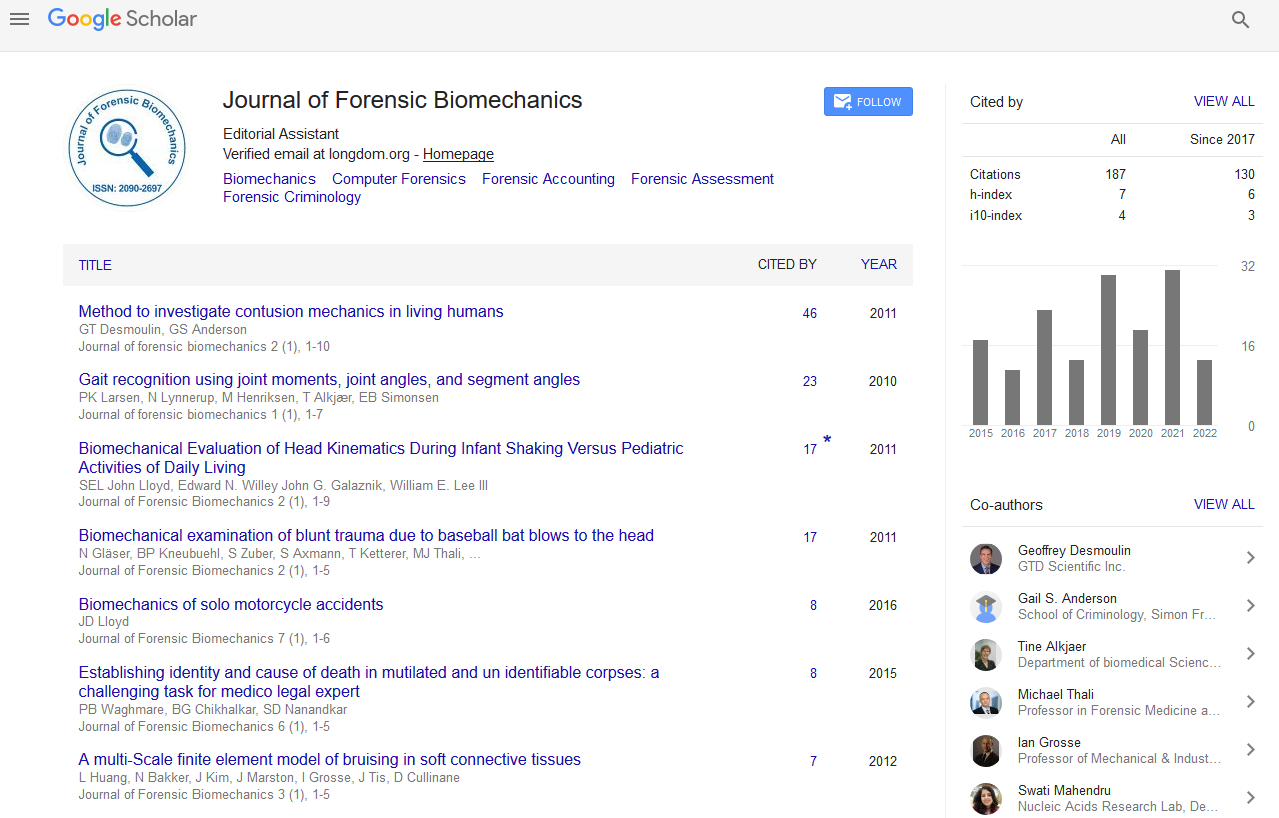Indexed In
- Genamics JournalSeek
- SafetyLit
- Ulrich's Periodicals Directory
- RefSeek
- Hamdard University
- EBSCO A-Z
- Geneva Foundation for Medical Education and Research
- Euro Pub
- Google Scholar
Useful Links
Share This Page
Journal Flyer

Open Access Journals
- Agri and Aquaculture
- Biochemistry
- Bioinformatics & Systems Biology
- Business & Management
- Chemistry
- Clinical Sciences
- Engineering
- Food & Nutrition
- General Science
- Genetics & Molecular Biology
- Immunology & Microbiology
- Medical Sciences
- Neuroscience & Psychology
- Nursing & Health Care
- Pharmaceutical Sciences
Abstract
Impact Performance Comparison of Type II Safety Helmets with and without Dedicated Mechanisms for Brain Protection
Michael Bottlang*, Stanley Tsai, Tristan Miller and Steven Madey
The latest generation of safety helmets features improved impact liners to meet Type II lateral impact requirements of standard ANSI Z89.1. Several manufacturers have also introduced technologies to dampen rotational forces known to cause brain injury. This study evaluated the impact performance of these novel helmets.
Seven Type II-rated helmets were tested, four of which included technologies for brain protection from rotational forces, namely Impact Armor, MIPS, Koroyd and WaveCel. Impact performance was tested in three scenarios: lateral impacts according to ANSI Z89.1, crown impacts according to EN-12492 and oblique impacts representative of falls. For lateral impacts, a helmeted headform was dropped onto an anvil with 31 J impact energy, impacting the helmet front, side and back to assess impact acceleration. For crown impacts, a striker was dropped onto the helmet crown at 96 J impact energy to assess impact force transmission. For oblique impacts, a Hybrid III head-neck surrogate was dropped onto a 45° anvil with 274 J impact energy to assess headform linear and rotational kinematics.
In lateral impacts, impact accelerations differed over 2-fold between helmets and three helmets exceeded the 150 g threshold specified by ANSI. In crown impacts, impact force transmission differed over 3-fold between helmets and two helmet models exceeded the 10 kN threshold specified by EN 12492. In oblique impacts, two technologies proved effective in reducing the transmission of rotational forces.
Significant differences in helmet impact performance exist. The results of this study can inform helmet selection and optimization by evidence-based numerical guidance.
Published Date: 2024-10-31; Received Date: 2024-10-01

